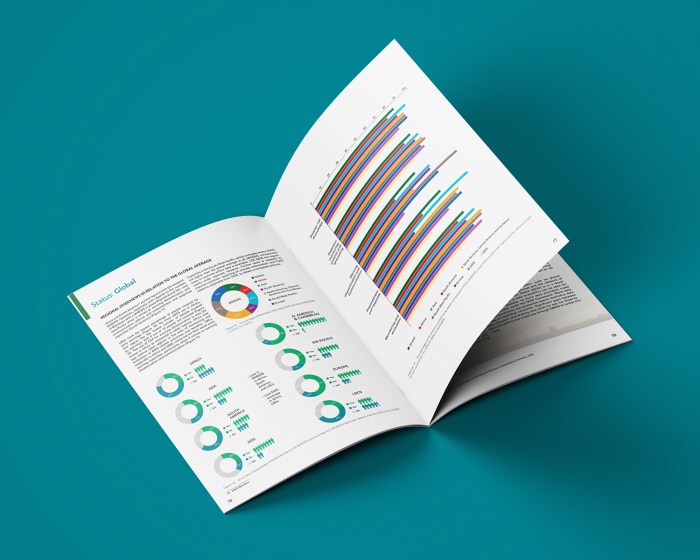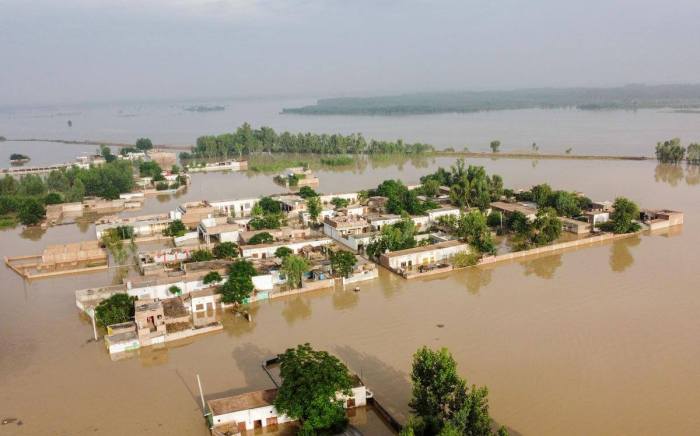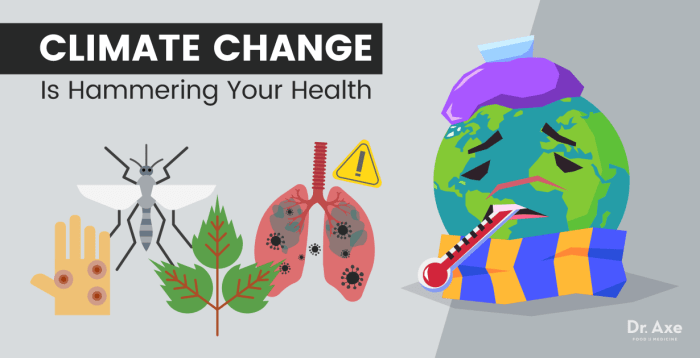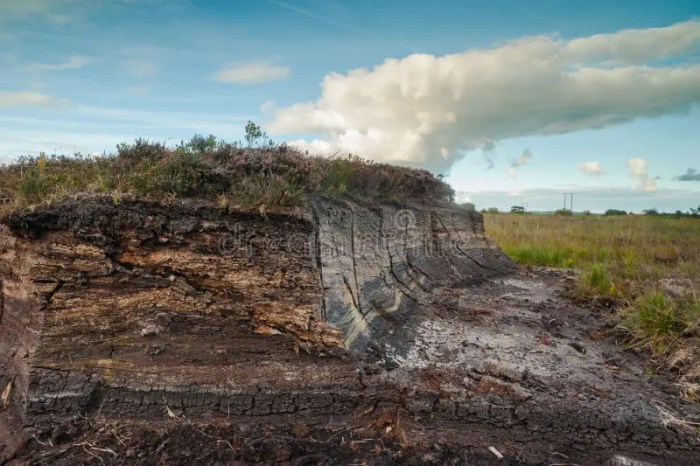
Irelands peat bogs climate action clashes with tradition – Ireland’s peat bogs climate action clashes with tradition. For centuries, these vital ecosystems have been integral to Irish life, providing fuel and shaping the landscape. But now, as climate change accelerates, the very methods that have sustained communities for generations are being challenged by the need to protect these carbon-rich lands. This complex issue explores the historical significance of peat bogs, their crucial role in carbon sequestration, and the potential conflicts between traditional practices and the urgent need for climate action.
It examines the economic and social implications of transitioning away from peat, highlighting the need for sustainable alternatives and solutions to support those impacted by the change.
Historical Context of Peat Bogs in Ireland
Peat bogs, sprawling landscapes of partially decayed plant matter, have held a profound and multifaceted significance in Irish history. Far from being simply inert features of the landscape, they have been deeply woven into the fabric of Irish life, providing sustenance, fuel, and cultural expression for centuries. Their economic and social importance is undeniable, and their relationship with Irish society has evolved over time, mirroring the changing needs and challenges of the nation.Peat bogs have served as vital resources for Irish communities throughout history.
From ancient times to the modern era, they have provided a readily available source of fuel, shaping daily routines and powering economies. The unique properties of peat, its ability to hold moisture and burn relatively efficiently, made it an invaluable fuel source in regions where other resources were scarce or less accessible. This crucial role has left an indelible mark on Irish culture and tradition.
Peat Harvesting Practices and Their Impact
Peat harvesting practices in Ireland have undergone significant transformations over time. Early methods were relatively rudimentary, focusing on hand-cutting and collecting peat. This approach, while effective for local needs, had a limited impact on the environment. However, with the advent of mechanization, peat harvesting became more efficient and extensive, leading to more substantial environmental consequences. The increased scale of extraction, often conducted without adequate consideration for ecological balance, began to alter the landscape and impact biodiversity.
This shift from traditional methods to more industrial practices marked a turning point in the relationship between humans and peat bogs.
Economic and Cultural Significance of Peat Bogs
Peat bogs have been crucial to the Irish economy for centuries. They provided a readily available fuel source for homes, farms, and industries, reducing reliance on other resources. This accessibility had a profound effect on daily life, powering everything from cooking fires to industrial processes. The extraction and use of peat were vital to the livelihoods of many communities, creating employment opportunities and contributing to the local economy.
Peat has been a key element of Irish cultural heritage, integral to the fabric of rural life.
Traditional Role of Peat Bogs in Irish Society
Peat bogs have played a significant role in Irish culture, often featured in folklore, poetry, and storytelling. Their presence in the landscape has been inextricably linked to Irish identity and traditions. The unique landscapes of peat bogs have inspired artistic expression, contributing to the rich tapestry of Irish culture. Furthermore, their practical uses have been incorporated into daily routines, with peat fires often central to social gatherings and communal activities.
Ireland’s peat bogs, vital carbon sinks, face a tricky balancing act between climate action and traditional practices. Meanwhile, a new development regarding agreements between Azeri SOCAR and ExxonMobil/BP, as reported in this Reuters article , highlights the global tension between fossil fuel interests and the push for sustainability. This further complicates the debate around Ireland’s bogs, reminding us that local conservation efforts are part of a larger, interconnected struggle.
Societal Benefits of Peat Use
The use of peat in Ireland provided numerous societal benefits. As a readily available fuel source, peat significantly reduced the cost of heating and cooking, making these necessities more accessible for families across the country. The creation of jobs associated with peat extraction and processing contributed to the economic well-being of local communities. Furthermore, the historical reliance on peat has shaped traditional Irish architecture, with structures designed to maximize the use of this readily available resource.
Evolution of Peat Harvesting
The evolution of peat harvesting reflects the interplay between human needs and environmental considerations. Early practices were largely focused on local needs, with minimal impact on the environment. However, the introduction of mechanized methods led to a significant increase in peat extraction, often at the expense of ecological balance. This shift in practices demonstrates a complex relationship between human needs and environmental responsibility.
This highlights the need for sustainable practices that consider both the economic and ecological aspects of resource utilization.
Environmental Impact of Peat Bogs
Ireland’s peat bogs are vital ecosystems, playing a crucial role in the country’s environment and climate. Beyond their aesthetic beauty, these vast wetlands hold significant ecological importance. However, their role in the wider environmental picture extends far beyond their visual appeal. Their unique characteristics and processes have profound impacts on carbon storage, biodiversity, water cycles, and overall ecosystem health.
Understanding these impacts is essential for effective conservation and management strategies.Peat bogs are powerful carbon sinks, absorbing and storing vast quantities of carbon dioxide from the atmosphere. This carbon sequestration capacity is a crucial factor in mitigating climate change. The intricate interplay of plant life, decomposition, and waterlogged conditions creates a unique environment ideal for long-term carbon storage.
Understanding how these ecosystems function is paramount for maximizing their contribution to global climate efforts.
Carbon Sequestration
Peat bogs act as natural carbon sinks, storing vast quantities of carbon in the form of partially decayed plant matter. This process, known as carbon sequestration, significantly contributes to climate change mitigation. The slow decomposition rate in the waterlogged conditions allows for the accumulation of peat, effectively locking away atmospheric carbon. This natural process helps reduce greenhouse gas concentrations in the atmosphere.
Effects of Peat Extraction on Biodiversity and Ecosystem Health
Peat extraction significantly impacts biodiversity and ecosystem health. The removal of peat disturbs the delicate balance of the bog ecosystem, leading to habitat loss for numerous plant and animal species. The loss of breeding grounds and food sources disrupts the food web and threatens the survival of specialized species adapted to the peat bog environment. This disruption can have cascading effects throughout the entire ecosystem, impacting the health and resilience of the bog.
Peat Bogs and Water Regulation
Peat bogs play a vital role in regulating water flow and controlling flooding. Their sponge-like structure allows them to absorb and release water gradually, acting as a natural buffer against heavy rainfall. This water regulation capacity is critical in mitigating the impacts of flooding and maintaining a stable water table. The presence of peat bogs can significantly reduce the risk of localized flooding, protecting downstream communities and infrastructure.
Environmental Consequences of Peat Bog Degradation
The degradation of peat bogs has severe environmental consequences. The loss of peatlands results in the release of stored carbon into the atmosphere, accelerating climate change. Furthermore, the disruption of water cycles can lead to altered water quality and availability, impacting downstream ecosystems and human populations. The loss of biodiversity, due to habitat destruction, further diminishes the resilience and overall health of the environment.
Data Illustrating Loss of Peatlands in Ireland
Unfortunately, precise, readily available data on the exact rate of peatland loss in Ireland is difficult to locate in a readily accessible format. Various studies and reports highlight the significant decline in peatland coverage, but quantifying the exact loss figures is not always readily presented. The challenges in data collection and the complexities of peatland mapping often lead to variations in reported figures.
Ireland’s peat bogs, vital for the country’s unique ecosystem, are at the heart of a climate action debate. Traditional uses clash with the need for environmental protection. Meanwhile, the tragic killing of journalist Fatima Hassona in Gaza, by Israeli forces, highlights the devastating consequences of conflict and the importance of peaceful resolutions. This underscores the complex relationship between tradition and environmental responsibility, mirroring the challenges faced in protecting Ireland’s peat bogs while respecting the cultural heritage intertwined with their use.
fatma hassona israel killed journalist gaza Finding a balance between respecting the past and adapting to the present is crucial for Ireland’s future, as well as globally.
The lack of consistent, long-term monitoring efforts makes precise quantification difficult. Nevertheless, it’s clear that peatland loss is a concern requiring ongoing attention and research.
Climate Action Policies and Peat Bogs: Irelands Peat Bogs Climate Action Clashes With Tradition
Ireland’s commitment to tackling climate change is increasingly incorporating the crucial role of its peatlands. Recognizing the significant carbon sequestration potential of these bogs, policymakers are actively seeking ways to balance conservation efforts with the historical reliance on peat for various uses. This delicate interplay between tradition and sustainability presents both challenges and opportunities for Ireland’s transition towards a low-carbon future.Irish climate action policies are heavily influenced by international agreements like the Paris Agreement.
These agreements set targets for reducing greenhouse gas emissions, and Ireland, as a signatory, is obligated to implement policies that align with these goals. The country’s ambition to meet its carbon reduction targets necessitates a holistic approach that encompasses peatland conservation.
Peatland Conservation Policies
Irish policies recognize the importance of peatland conservation for climate change mitigation. These policies focus on reducing emissions from peat extraction and promoting the restoration of degraded peatlands. The government is implementing measures to prevent further drainage and degradation of peatlands, aiming to encourage natural regeneration and carbon sequestration. Such policies include establishing protected areas and implementing stricter regulations on peat extraction.
Transitioning Away from Peat Usage
The transition away from peat usage in Ireland requires a multifaceted approach. This involves promoting alternative energy sources, supporting sustainable agriculture practices, and developing new technologies for energy production. Government initiatives are essential in fostering the adoption of sustainable alternatives, and research into innovative methods for utilizing peatlands in a sustainable manner is also crucial.
Financial Incentives and Support Mechanisms
Financial incentives and support mechanisms are vital to encourage peatland restoration and the transition away from peat usage. These initiatives can include grants for landowners undertaking restoration projects, tax breaks for businesses that invest in sustainable alternatives, and funding for research and development in peatland-related technologies. By providing financial support, the government can facilitate the transition to more sustainable practices, incentivizing landowners and businesses to adopt environmentally responsible alternatives.
Conflicts Between Tradition and Climate Policies
Traditional peat extraction practices are deeply rooted in Irish culture and rural communities. These practices often provide livelihoods and employment opportunities. The transition to climate-friendly alternatives needs to address these concerns. This involves ensuring a smooth and equitable transition, providing retraining opportunities for workers, and developing alternative economic opportunities for communities reliant on peat extraction. Potential conflicts can be mitigated by involving local communities in the policy-making process, ensuring that their concerns are addressed, and creating a transparent and inclusive approach to implementation.
Societal Impact of Climate Action
The transition away from peat usage in Ireland, crucial for mitigating climate change, presents a complex challenge for local communities deeply intertwined with this traditional practice. This shift necessitates a careful consideration of potential economic and social ramifications, alongside the identification of sustainable alternatives to ensure a just and equitable transition. The path forward requires a multifaceted approach that considers the diverse needs of all stakeholders.
Economic Impacts of Transitioning Away from Peat
The peat industry, particularly in rural Ireland, provides livelihoods for many families. The closure of peat extraction sites and associated businesses would inevitably lead to job losses and reduced income for communities dependent on this sector. For instance, the decline of the coal industry in the UK and the USA has resulted in significant economic restructuring, and the associated challenges and support programs provide valuable lessons for the Irish transition.
Understanding these potential economic losses is crucial to developing support packages that ensure a smooth transition. A proactive approach, involving reskilling initiatives and the creation of alternative employment opportunities, is essential to minimize hardship and maintain community well-being.
Social Consequences of Climate Action Policies
Climate action policies aimed at phasing out peat use can have significant social consequences for communities reliant on peat-based livelihoods. These policies could potentially disrupt traditional ways of life, particularly for those with generations of experience in peat extraction and associated activities. The importance of preserving cultural heritage and traditions should be recognized, and programs should be developed to ensure that these aspects are considered and addressed.
Addressing potential displacement, job losses, and loss of cultural identity is paramount to a successful transition.
Alternative Economic Opportunities from Peatland Restoration
Peatland restoration presents a multitude of economic opportunities, including eco-tourism, nature-based businesses, and the creation of carbon sequestration projects. The beauty and biodiversity of restored peatlands can attract tourists, creating new employment opportunities in the hospitality and nature-based tourism sectors. The restoration of peatlands also plays a key role in carbon sequestration, offering a valuable service to the environment and potentially generating revenue through carbon credits.
Developing these alternative economic models is vital to support the long-term viability of peatland communities.
Education and Awareness Campaigns
Public awareness campaigns are crucial to fostering understanding and support for peatland conservation. These campaigns should highlight the environmental benefits of peatland restoration, the economic opportunities it provides, and the importance of transitioning to sustainable alternatives. Community-based education programs, workshops, and interactive exhibits can effectively engage the public in the process. Through education and outreach, the public can be empowered to actively participate in the conservation efforts and understand the value of peatlands.
Comparison of Traditional Peat Use and Modern Sustainable Alternatives
| Characteristic | Traditional Peat Use | Sustainable Alternatives | Further Considerations |
|---|---|---|---|
| Energy Source | Fossil fuel substitute for heating and cooking | Renewable energy sources (solar, wind, biomass) | Transition to renewable energy infrastructure is crucial. |
| Environmental Impact | Significant habitat loss, greenhouse gas emissions | Carbon sequestration, biodiversity enhancement | Peatland restoration projects reduce carbon footprint. |
| Economic Impact | Direct employment in peat extraction and processing | New jobs in renewable energy sector, tourism, and restoration | Reskilling programs for workers in peat sector are vital. |
| Social Impact | Dependence on traditional livelihoods | Sustainable community development, cultural preservation | Community engagement and participation in decision-making. |
Balancing Tradition and Sustainability
Ireland’s rich history intertwines deeply with its peat bogs. For generations, these vital ecosystems have provided fuel for heating and agriculture, contributing significantly to the cultural fabric of the nation. However, the extraction of peat has taken a toll on these vital carbon sinks, highlighting a stark clash between traditional practices and modern climate action goals. Finding a balance between these competing interests is crucial for Ireland’s future.The transition away from peat extraction requires careful consideration of the environmental benefits of conservation versus the economic and social benefits of peat use.
Understanding the multifaceted impacts on various stakeholders is paramount to developing effective solutions and supporting communities during the shift. A thoughtful approach, incorporating both historical context and contemporary needs, is essential to navigate this complex challenge.
Benefits of Peat Use vs. Conservation
The use of peat offers significant benefits, primarily in the provision of affordable heating and agriculture. Traditional farming practices, particularly in rural areas, rely heavily on peat-based soil enrichment. This has been a critical element in agricultural productivity for centuries. However, the environmental benefits of peatland conservation are equally, if not more, substantial. Peat bogs act as crucial carbon sinks, absorbing vast quantities of atmospheric carbon dioxide and playing a vital role in mitigating climate change.
Comparative Analysis of Peat Extraction and Conservation
| Stakeholder | Peat Extraction (Pros) | Peat Extraction (Cons) | Peat Conservation (Pros) | Peat Conservation (Cons) |
|---|---|---|---|---|
| Farmers | Affordable soil enrichment, improved crop yields | Environmental degradation, potential soil erosion, water quality issues | Reduced risk of soil erosion, sustainable soil health, protection of water sources | Potential increase in agricultural costs, adjustments to farming practices required |
| Energy Providers | Reliable, readily available fuel source | Environmental damage, contribution to greenhouse gas emissions, limited supply in the long run | Incentives for renewable energy development, reduced reliance on fossil fuels, enhanced energy security | Increased initial investment in renewable energy infrastructure, potential for job displacement in the peat industry |
| Rural Communities | Employment opportunities, traditional livelihoods | Environmental degradation, potential health issues from peat dust, community displacement | Support for green economy initiatives, new employment opportunities, cultural preservation | Potential loss of traditional livelihoods, need for retraining and reskilling programs, financial support for transitioning communities |
| Environment | (None) | Habitat loss, biodiversity decline, carbon emissions, water pollution | Carbon sequestration, biodiversity preservation, water purification, flood mitigation | (None) |
Potential Solutions for Balancing Traditional Practices and Climate Action
A gradual transition is crucial. Implementing incentives for renewable energy alternatives in rural communities, coupled with financial support for the retraining and reskilling of workers in the peat industry, is essential. This includes exploring the development of sustainable alternatives to peat-based practices in agriculture, including the adoption of improved soil management techniques. Furthermore, supporting the development of alternative income sources in peat-dependent communities can mitigate the impact of transition.
Strategies for Supporting Communities Affected by the Transition
Comprehensive community engagement is vital. Creating a clear communication strategy about the transition, involving affected communities in the planning process, and providing accessible information about alternative employment opportunities and support programs are essential. Government initiatives, such as financial aid packages and retraining programs, should be targeted to provide support to those directly affected.
Ireland’s peat bogs, crucial for carbon sequestration, are facing a tough spot when it comes to climate action. Traditional peat harvesting practices clash with environmental goals. Meanwhile, in a completely different tech sphere, an AI company, Glean has hit a massive $72 billion valuation in their latest funding round. This stark contrast highlights the broader challenge of balancing progress in various sectors with the need to protect our planet, mirroring the ongoing debate surrounding Ireland’s bogs.
Examples of Successful Transitions in Other Countries, Irelands peat bogs climate action clashes with tradition
The shift towards sustainable practices is not unique to Ireland. Successful examples from other countries, like the Netherlands’ transition from intensive agriculture to more sustainable farming methods, offer valuable insights. Similarly, the implementation of carbon pricing mechanisms in other countries provides models for supporting the transition. Learning from these experiences is vital in creating tailored solutions for Ireland.
Future of Peat Bogs in Ireland
The future of Ireland’s peat bogs hinges on the delicate balance between preserving their rich ecological heritage and embracing climate action. These vital ecosystems, crucial for carbon sequestration and biodiversity, face significant pressures from both traditional peat extraction and the urgent need to mitigate climate change. Understanding potential future scenarios is paramount for effective conservation and restoration strategies.The intricate relationship between peat bogs and Ireland’s cultural identity, coupled with the pressing need to address climate change, demands a thoughtful approach.
Finding sustainable solutions requires careful consideration of diverse perspectives and the potential for technological advancements to support restoration efforts.
Potential Future Scenarios for Peat Bogs
Various levels of climate action will influence the future of peat bogs in Ireland. The following table Artikels potential scenarios, considering the impact of conservation and restoration efforts.
| Scenario | Level of Climate Action | Peat Bog Conservation Outcomes | Peat Bog Restoration Outcomes |
|---|---|---|---|
| Scenario 1: Limited Climate Action | Continued peat extraction and limited investment in restoration. | Further degradation of peat bogs, with increased greenhouse gas emissions. Loss of biodiversity and ecosystem services. | Limited restoration efforts, focusing primarily on small-scale projects with limited impact. |
| Scenario 2: Moderate Climate Action | Transition to renewable energy sources, increased awareness and some policy support for restoration. | Reduced rate of degradation, some peat bog protection and restoration projects. | More widespread restoration projects, but with limited resources and slower progress. |
| Scenario 3: Aggressive Climate Action | Strong policy support for peatland restoration, significant investment in renewable energy, and international collaboration. | Significant protection and restoration of peat bogs, leading to enhanced carbon sequestration and biodiversity. | Large-scale restoration projects, potentially using innovative technologies, resulting in a healthier peatland ecosystem. |
Technological Advancements in Peatland Restoration
Technological advancements offer promising avenues for peatland restoration. For instance, drone technology can be utilized for monitoring peat bog health, while advanced soil remediation techniques can improve the success of restoration projects. Innovative approaches, like the development of bioremediation techniques, hold potential to accelerate the recovery of degraded peatlands.
“The integration of technology into peatland restoration offers significant potential for efficiency and effectiveness in achieving conservation goals.”
Long-Term Monitoring and Evaluation
Long-term monitoring and evaluation are crucial for assessing the success of peat bog conservation projects. Monitoring programs should track changes in carbon sequestration, biodiversity, and water quality over extended periods. These data-driven insights will inform future interventions and refine strategies for peatland management.
International Collaborations for Peat Bog Restoration
International collaborations are essential for sharing best practices and supporting peat bog restoration efforts. Collaboration can involve knowledge exchange, joint research projects, and financial support for restoration initiatives. The global nature of climate change necessitates a concerted international effort to address the degradation of peatlands. Ireland can benefit from partnering with other countries with extensive experience in peatland restoration.
Sharing experiences and resources can accelerate the restoration process and maximize its impact.
Visual Representation of Peat Bogs

Peat bogs, vital carbon sinks and ecosystems, hold a significant place in Ireland’s natural heritage and climate narrative. Their visual representation, from historical extraction to modern restoration, can powerfully convey their importance and the challenges they face. Visualizations can illustrate the interplay between human activity, environmental impact, and the potential for sustainable solutions.Understanding these visual representations allows for a deeper appreciation of the complex relationship between tradition, sustainability, and the future of Ireland’s peatlands.
Typical Irish Peat Bog Ecosystem
Irish peat bogs are diverse ecosystems, varying in their flora and fauna depending on factors such as moisture level and nutrient availability. A typical bog will exhibit a characteristic mix of vegetation adapted to acidic, waterlogged conditions. Sphagnum mosses, the primary peat-forming plants, are usually prominent. Other plants, including cotton grass, bog rosemary, and sundews, are also common.
These unique communities support a range of specialized invertebrates, amphibians, and birds. The bog’s surface often appears as a soft, uneven landscape, with areas of raised hummocks and hollows, reflecting the complex hydrology and peat accumulation.
Historical Image of Peat Extraction
A historical image of peat extraction would depict a scene of significant human activity. Large-scale extraction often involved the use of tools like spades and scythes to cut and harvest peat. This image would reveal the extensive areas of exposed peatland, a stark contrast to the undisturbed bog landscape. The sheer scale of the extraction would be evident, showcasing the substantial impact on the bog’s structure and potentially its hydrology.
Work crews, likely organized and numerous, would be visible, highlighting the significant labor involved and the societal reliance on peat.
Modern Image of a Restored Peat Bog
A modern image of a restored peat bog would highlight the beauty and functionality of the landscape. This image would contrast the previous picture by displaying areas of healthy, undisturbed vegetation. Sphagnum moss would likely be covering large sections, and the overall scene would show signs of ecological regeneration. The restored area would likely exhibit a diversity of plants and animals, reflecting the success of restoration efforts.
The image would symbolize the potential for reclaiming damaged ecosystems and demonstrate the beauty of restored peatlands.
Environmental Consequences of Peat Extraction
An image depicting the environmental consequences of peat extraction would show the visible damage to the landscape. Areas of exposed peat would be evident, potentially with signs of erosion or altered water flow. The image could highlight the loss of biodiversity, showing diminished plant cover and the absence of characteristic species. The image would visually illustrate the impact of extraction on the peatland’s ability to sequester carbon and its role in the broader ecosystem.
The image would demonstrate the fragility of the ecosystem and the importance of conservation efforts.
Infographic: Carbon Sequestration Potential of Peat Bogs
An infographic illustrating the carbon sequestration potential of peat bogs would visually represent the amount of carbon stored in these ecosystems. The graphic would likely use various colors to highlight different layers of peat, illustrating the increasing carbon content with depth. It would visually compare the carbon stored in a peat bog to other carbon sinks, such as forests.
A graph or chart would show the impact of peat extraction on carbon release, quantifying the loss of carbon sequestration capacity. The infographic would clearly present the significant role of peat bogs in mitigating climate change. The infographic would serve as a visual aid, emphasizing the importance of preserving these vital ecosystems.
Closure
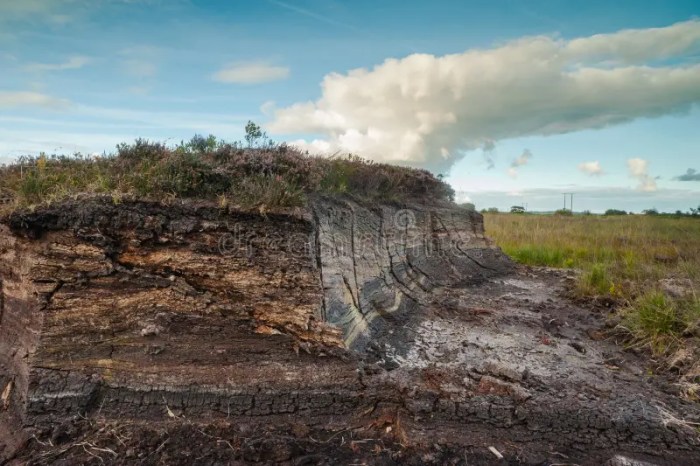
The future of Ireland’s peat bogs hangs in the balance. The clash between traditional practices and climate action demands careful consideration of the economic and social ramifications. Finding a path forward requires a balanced approach that acknowledges the importance of tradition while prioritizing the urgent need to mitigate climate change. Innovative solutions, alternative energy sources, and community support will be critical to navigating this complex transition successfully.
The ultimate goal is to preserve these vital ecosystems while securing a sustainable future for Ireland.

